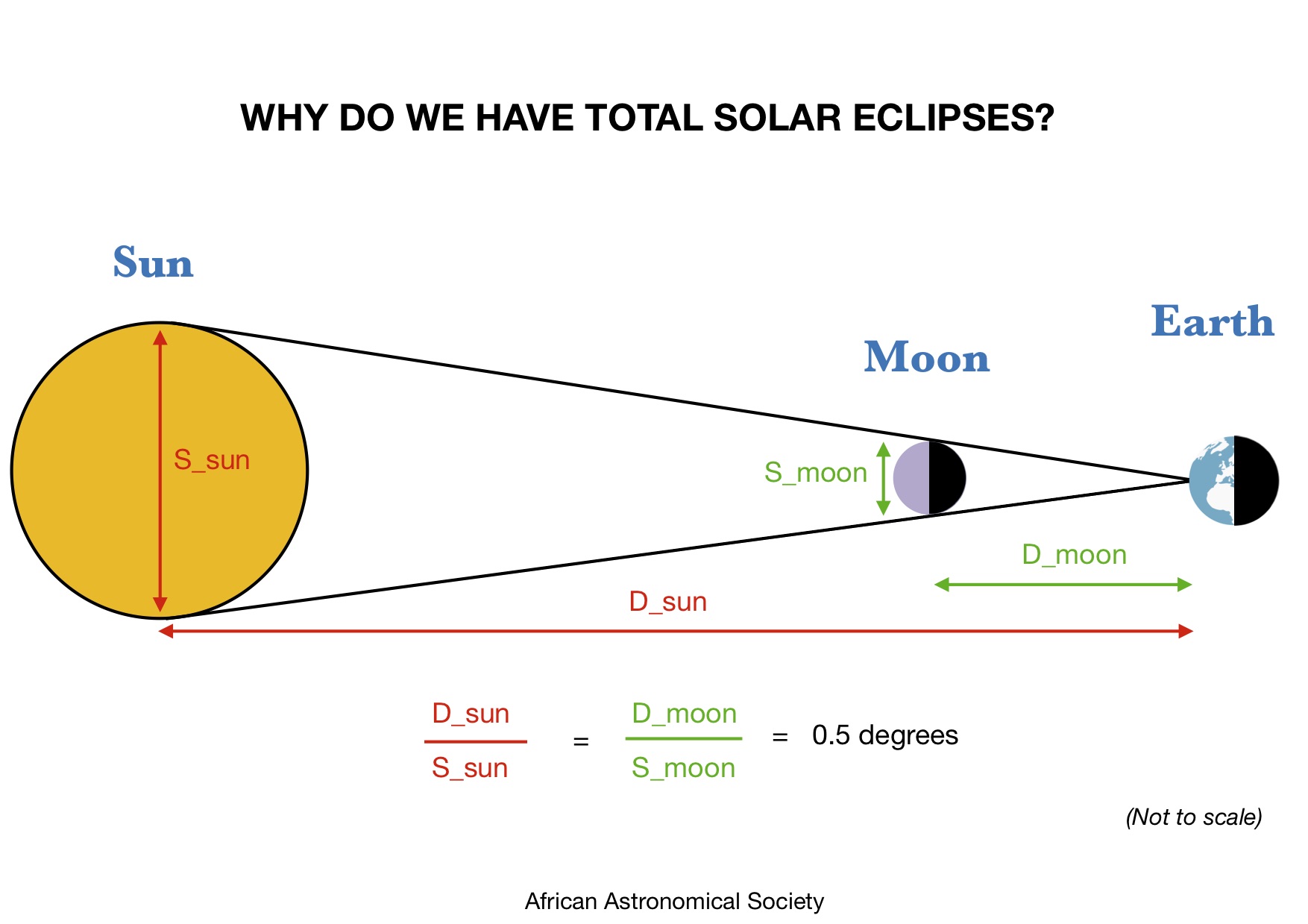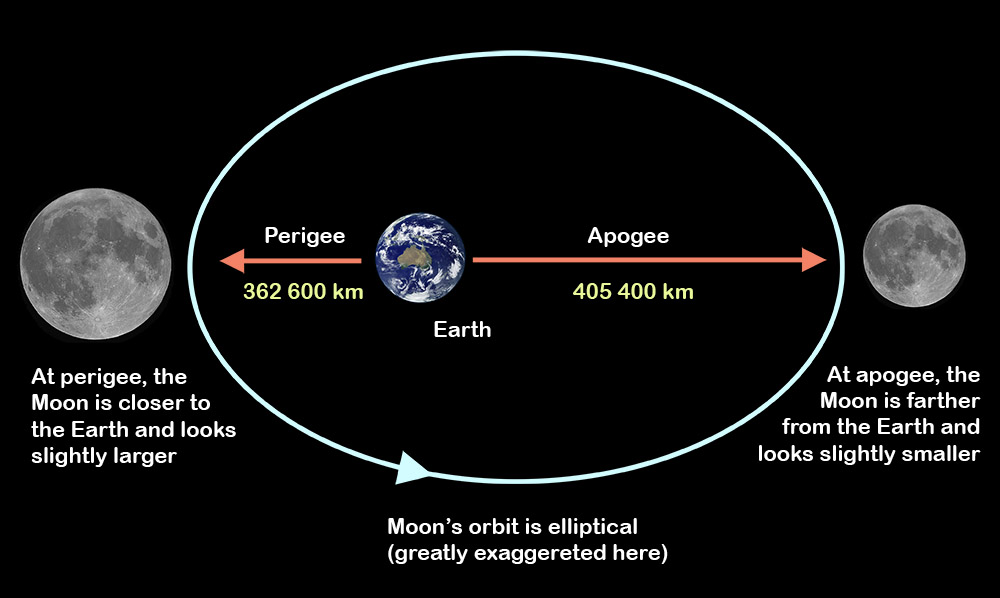ANNULAR SOLAR ECLIPSES
We had explained in the previous section that people in the region where the moon’s antumbra falls will experience an annular solar eclipse, and that the moon has to be closer to the sun for this to happen.

A total solar eclipse itself is a product of an amazing coincidence. During totality, the disc of the moon exactly covers the disc of the sun, thereby exposing its corona. But why is the disc of the moon exactly the same size of the sun? The diameter of the moon is 3,474 km, whereas the diameter of the sun is 1,391,400 km, which is about 400 times larger. The moon is about 385,000 km away from the earth’s centre. The sun is much farther away of course, at a distance of about 150 million km. But this turns out to be about 395 times farther away than the moon. Since the sun is as much bigger than the moon as it is farther away, the discs of both the sun and the moon are of the same size in our sky, about 0.5 degree wide (for comparison, the thumb on your outstretched hand will cover roughly 2 degrees of the sky). This is why we can experience total solar eclipses. However, the moon is slowly moving away from us, at roughly 4 cm per year, and in about a billion years, will be too far away to cause any more total eclipses of the sun. The reason we experience annular solar eclipses is not because of this slow movement of the moon away from us.

The orbit of the moon around the earth is not a perfect circle, but is shaped like an oval, called an ellipse. This means that the distance to the moon varies during the period of its orbit around us. The closest distance (during perigee) between the moon and the earth and the farthest distance (during apogee) differ by about 11%. This implies that the apparent size of the moon also varies by 11 % throughout its orbit, between about 0.49 to 0.56 degrees in the sky. When the moon is farther away than usual, it also appears smaller in the sky than usual.

If the moon comes in between the sun and the earth when it is farther away, then it is not large enough to completely cover the sun during mid-eclipse and its antumbra reaches the earth rather than its umbra. During mid-eclipse, the places under the antumbra will see a thin ring (that is, annulus) of the sun which is not covered by the moon. This “ring of fire” is called the annular solar eclipse. On 21 June 2020, the moon will be only 1% smaller than the sun on the sky, and will not be able to cover the sun completely. This is why we will have an annular solar eclipse instead of a total solar eclipse.
The locations under the penumbra, which are on either side of the annularity path will only see a partially obscured sun even at maximum eclipse. This penumbral region is vastly bigger than the antumbral region, and most countries will see a partial solar eclipse.


